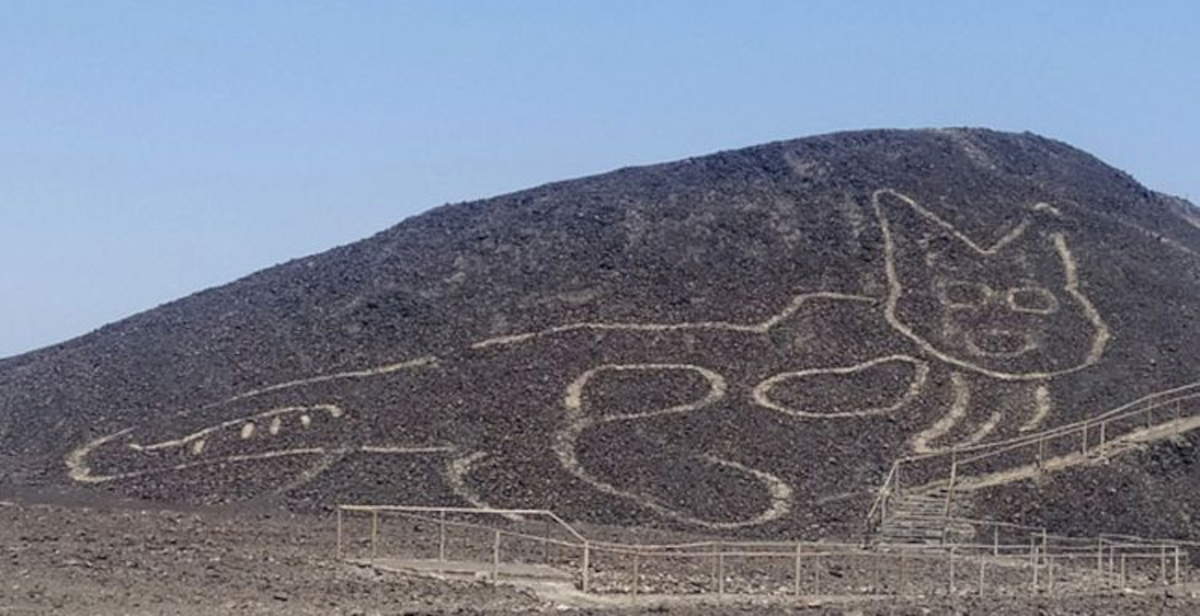The Peruvian government has decided to reduce the protected area around the famous Nazca Lines in Peru’s Nazca Desert, raising a wave of criticism from the scientific community and environmental organizations. According to an announcement Friday by Peru’s Ministry of Culture, the archaeological park will be downsized from about 5,600 square kilometers to just over 3,200. The move has raised widespread fears that the reduction could pave the way for more mining, particularly illegal mining, in an area of exceptional historical and scenic value.
The new delimitation excludes a portion of territory of more than 2,000 square kilometers, an area comparable to the entire urban area of Lima, the country’s capital. Some 300 mining concessions are concentrated within this area, according to Sidney Novoa, technology director of the nongovernmental organization Amazon Conservation, which conducted the mapping of the region. The presence of such concessions within the portion now excluded from the protected park fuels concerns that the new configuration will, in fact, encourage the expansion of informal and illegal mining. The Nazca Lines archaeological site is one of the best known in the world and is Peru’s second-largest tourist attraction after Machu Picchu. Located in a desert area in the southern region of the country, the site is famous for its giant geoglyphs traced on the ground surface, depicting animals, stylized human figures and geometric patterns. The images, including those of hummingbirds, monkeys and whales, are only visible from above and date back about 2,000 years. The site was listed as aUNESCO World Heritage Site in 1994.
“They are trying to erase history,” said Ana María Cogorno Mendoza, president of the Maria Reiche International Association, a nonprofit organization created to protect the Nazca Lines. “The area that is being separated is exactly where some of the oldest rituals took place, according to our research.”
“There has not been enough study to say it has no cultural or archaeological value,” also added César Ipenza, an environmental lawyer. “This area, which belongs to our ancestors, requires real protection and not just political expediency.”
In recent years, scientific research has continued to make progress in understanding the site. In 2023, a team of archaeologists employed artificial intelligence tools to identify hundreds of new geoglyphs, earlier than those already known and also dating back more than two millennia. These discoveries have reinforced international interest in protecting the site and the importance of preserving the integrity of the area surrounding it. The Ministry of Culture justified its decision by claiming that it was the outcome of a 20-year study and consultation process. The authorities also made it clear that the new delimitation does not directly involve either the area recognized by UNESCO as a world heritage site or its buffer zone. In any case, for many experts, the reduction undermines the effectiveness of protection measures and weakens conservation efforts carried out for decades. Among the strongest criticisms was that of César Ipenza, an environmental expert, who said that the removal of protection in an area overlapping with numerous mining concessions risks incentivizing illegal mining. Ipenza pointed out that informal mining has benefited from favorable regulatory treatment over the years, thanks to tools such as Reinfo-the Integral Registry of Informal Miners-which allows companies to operate pending formalization, without real state oversight.
The move “exposes the reserve to very serious risks and cumulative damage,” argues Mariano Castro, former environment minister. “The Ministry of Culture is not taking into consideration the expansion of hundreds of extractive mining activities that will have a cumulative impact on existing sensitive archaeological areas in Nazca.”
“This update responds to the need to more accurately reflect the relationship between geoglyphs and the physical features recorded in the area, ensuring their protection and conservation,” said Fabricio Valencia, Peru’s minister of culture.
As interpreted by many observers, the removal of constraints on an area already affected by land-use claims risks creating a fast track for mining expansion at a time when the international price of gold has reached particularly high levels. The combination of the rising value of the precious metal and the relaxation of environmental and cultural protections could thus provide a powerful incentive for the uncontrolled development of mining operations, with hardly reversible consequences in terms of landscape and archaeology. Some sources have also pointed to the opacity of the decision-making process that led to the redefinition of the reserve’s boundaries. Although the official version speaks of a study initiated 20 years ago, there would be no evidence of recent public consultations with the active participation of local communities or the scientific community. The absence of transparent dialogue fuels suspicions that the decision was influenced by economic pressures and private interests related to the mining sector. The presence of concessions in the territory removed from archaeological protection has also been documented by independent mapping, which shows a strong overlap between the areas now excluded from the park and the areas requested by operators registered in Reinfo. This registry, although created with the aim of starting a path to regularize informal activities, has often been criticized for its lack of effective controls and its tendency to perpetuate, rather than resolve, the situation of widespread illegality. The South American country has enormous mineral resources, including gold, copper and silver, which make up a major part of the national economy. Despite this, the growth of the mining sector has often generated conflicts with local people and cultural and natural heritage organizations.

 |
| Peru, protests over government's reduction of protected area around Nazca Lines |
Warning: the translation into English of the original Italian article was created using automatic tools. We undertake to review all articles, but we do not guarantee the total absence of inaccuracies in the translation due to the program. You can find the original by clicking on the ITA button. If you find any mistake,please contact us.